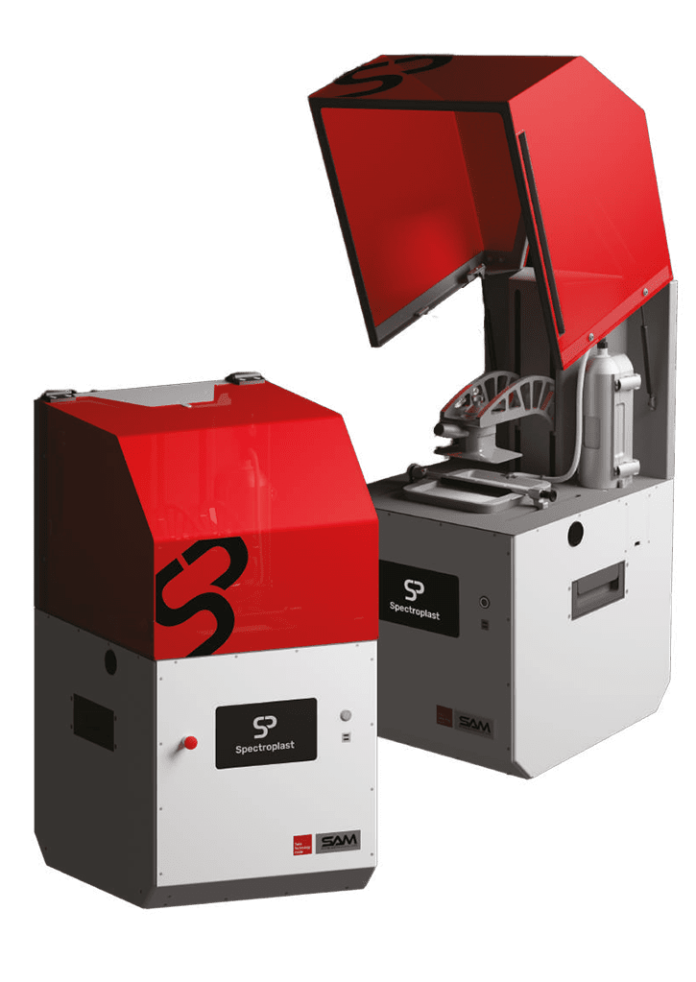This article has been updated to reflect the fact the L320 3D printer has been replaced by another one which is commercially available on the market.
Swiss company Spectroplast started its journey in 2017 as a provider of 3D printing silicone services. In 2019, the company raised €1.4 million from AM Ventures. The goal was then to scale up its Silicone 3D Printing service while enhancing people’s lives through customized Silicone healthcare products.
As the Silicone 3D printing market continues to grow, the company decides to add another string to its bow with the development of a silicone 3D printer. Named SAM – which stands for Silicone Additive Manufacturing, the 3D silicone printer is designed for end-use silicone products in injection moulding quality. According to Spectroplast, it enables the production of high precision end-use silicone products without the use of molds and at zero waste.
Bringing down the cost of prototyping in silicone
Ultimately, like any OEM, Spectroplast also has to deal with costs considerations regarding the production of silicone 3D printed products. This cost conversation is raised every time the production process is compared to traditional methods of fabrication.
In this specific case, fabricating a silicone prototype or end-use part first requires to create a model of that part, use that model to make a mold and thereafter inject silicone into the mold to form the final part. With 3D printing, the fabrication takes place in a matter of hours – depending on the part complexity -, removing this way all of the costs associated with mold making.
Spectroplast claims that SAM produces 100% silicone parts which cannot be distinguished from injection-molded parts in appearance, feel, or performance. The proprietary technology would not too far from today’s resin 3D printers that use light to solidify liquid polymer resins.
“Our one-component material system is similar to moisture-cured silicone in that it just needs an external trigger to initiate the polymerization reaction within the material. In our case, that trigger is light”, CEO and founder Manuel Schaffner explains.
Key specifications include:
This technology, software, and materials are all proprietary. The complete process consists of slicing, printing, washing, drying, and post-curing and the package will be made available at +/- 100 000 $.
| Main features | Description |
| Printer Dimensions | 430 x 510 x 820 mm |
| Layer Height | 100 μm |
| Pixel Size | 70 μm |
| Speed | 5 – 8 mm/hr |
| Light Engine | UV-LED DLP® |
| Power | 100-240 V 50 / 60 Hz |
| Temperature | 18-28 °C |
| Weight | 25 kg |
“We don’t want the 3D printer to become a competition to our core business as a silicone contract manufacturer, so we’re only providing this system to customers that require an even faster turnaround,” says Manuel Schaffner, CEO and founder of Spectroplast. It was these key customers who asked for their own in-house silicone 3D printing solution to accelerate prototyping. “It’s mainly our audiology customers, so hearing aids, hearing protection, and headphones — that’s the customer group that relies on shorter lead times than we can serve from a contract manufacturing point of view, such as same-day turnarounds.”
SAM is not the first Silicone 3D printer on the market. We do know that ACEO®, the brand of chemicals company WACKER has been providing silicone 3D printing services with its own technology. Their technology was not available for commercialization, but it didn’t last for long as WACKER shut down this unit last year. Another company that developed a silicone 3D printer is German RepRap (known as InnovatiQ since 2020 and now part of the Arburg family). L320, their Silicone 3D printer was launched in 2019; it integrated a Liquid Additive Manufacturing Technology that could process liquid silicone rubber (LSR) materials. The L320 has now been replaced by the LiQ320, and is commercially available for purchase. We do hope that Spectroplast will do better than other companies of the same range and learn from their mistakes.
After all, the silicone market size is expected to hit US$ 32.97 billion by 2030 with a rise in demand from the healthcare, personal care, and consumer products sectors. And if there is one technology that can keep up with this demand by delivering customizable solutions, it’s definitely 3D printing.
Remember, you can post job opportunities in the AM Industry on 3D ADEPT Media free of charge or look for a job via our job board. Make sure to follow us on our social networks and subscribe to our weekly newsletter : Facebook, Twitter, LinkedIn & Instagram ! If you want to be featured in the next issue of our digital magazine or if you hear a story that needs to be heard, make sure you send it to contact@3dadept.com.






